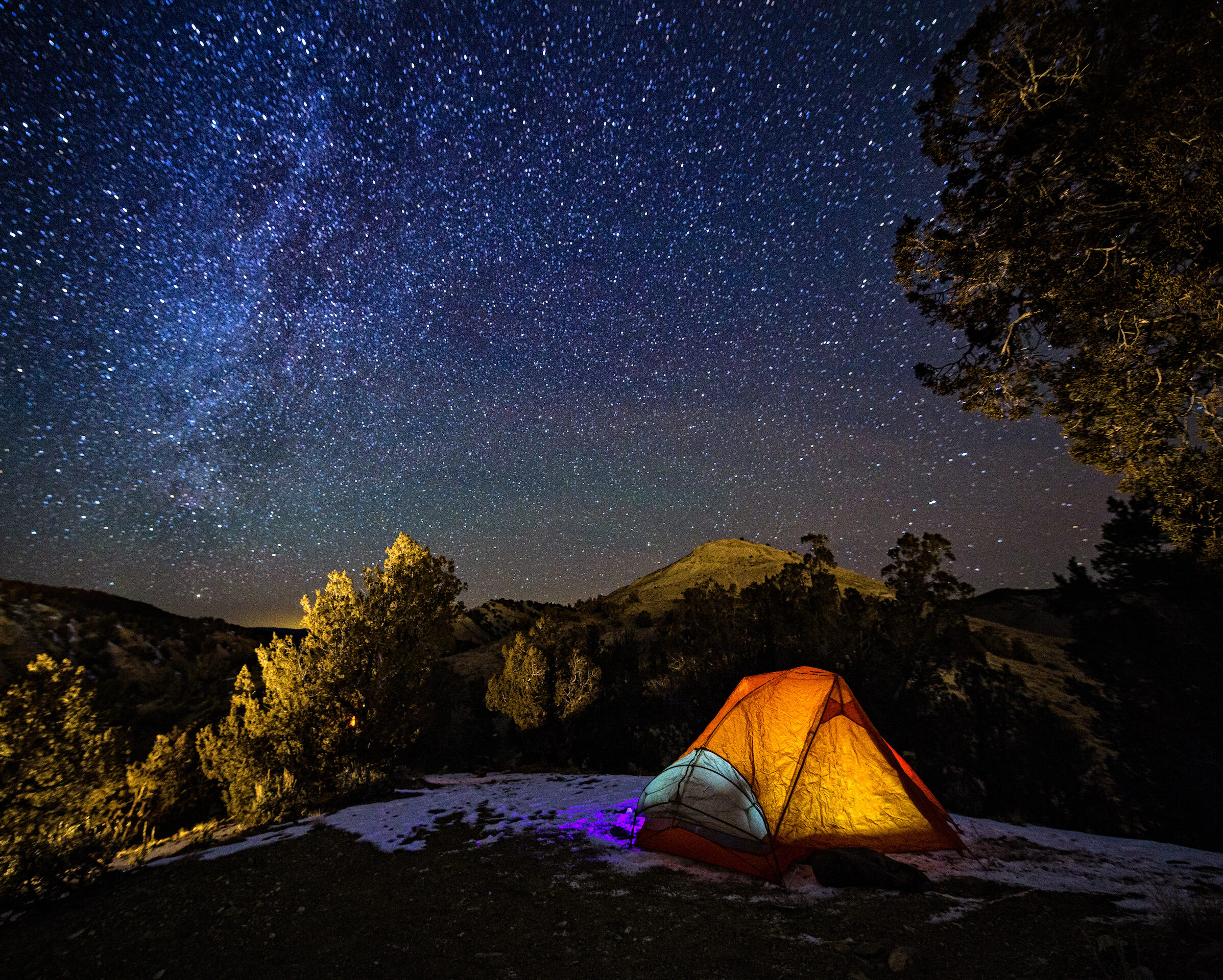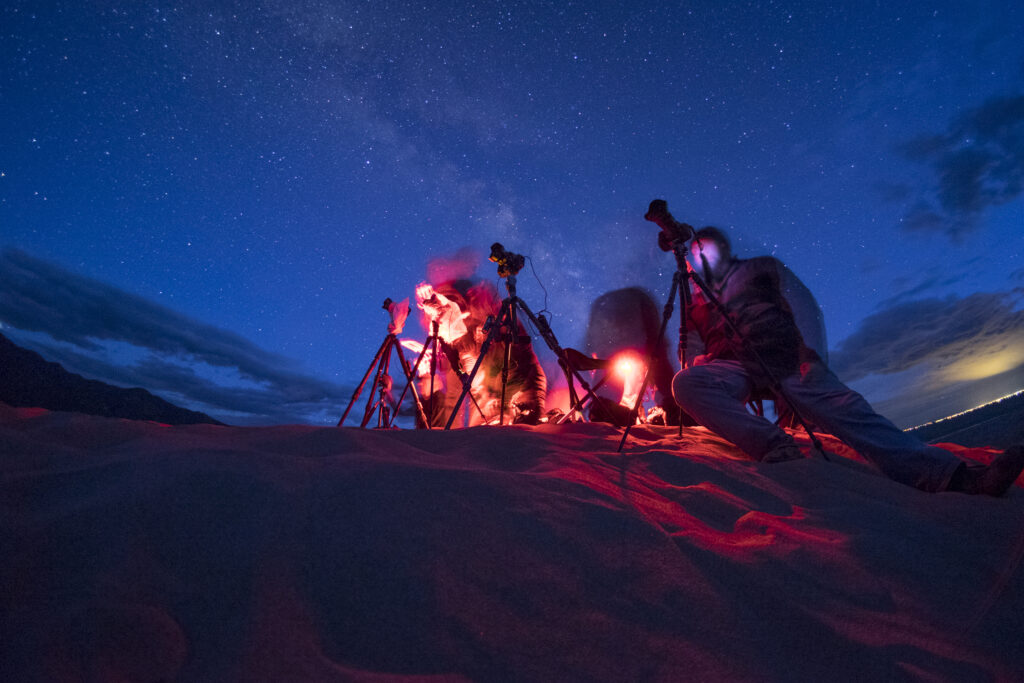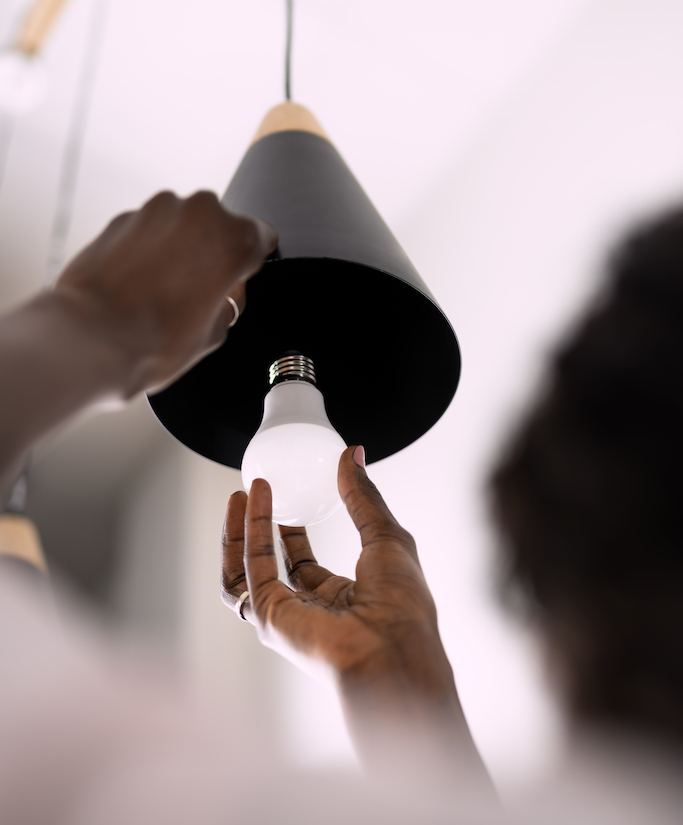Research
Dark Sky & Artificial Lighting Guidelines

Public lands and Tribal lands are some of the last vestiges of pristine or near pristine dark skies. Yet even in these areas, improper use of artificial light can negatively impact wildlife ecosystems, and visitors. For example, bat habitat can be affected by lighting, with some bats abandoning lit areas for hunting and other less sensitive species being attracted to light due to the concentration of insects. Migratory birds and sea turtles are attracted to and disoriented by artificial lighting, which draws them into urban environments where risk of fatal encounters is increased. When it comes to visitors, remember that people often come outdoors to escape the influence of artificial light and enjoy the starry night sky. Even minimal lighting, if improperly used and installed can be seen from great distances, impacting wildlife and human vision. Do your best to minimize your lighting impacts when enjoying the outdoors.
When recreating at night, be prepared to see the stars! Consider the following guidelines to reduce your impacts and help preserve the natural dark sky:
IS LIGHT NEEDED?
First, ask yourself if additional light is needed to facilitate your activity. Often our eyes can adjust to the dark sky and still feel safe to enjoy recreational activities without artificial light. It takes between 20 to 30 minutes for the human eye to fully adjust to darker environments.
REFLECTIVE TAPE
For safety purposes, consider reflective tape or gear with reflective materials rather than using artificial lights
LIGHT INTENSITY
If artificial light is needed to facilitate your activity, use only the light intensity that is necessary (e.g., headlamps rather than vehicle headlights or the lowest setting needed on a headlamp). Use LEDs with warm colors such as yellow, amber or red at lower intensity levels, rather than white or blue lights, which can impact the health of wildlife and humans. These warmer lights also allow for human eyes to adjust more quickly to darkness after being turned off.
DIRECTION OF LIGHT
Keep all artificial lighting pointed down and only in the direction where light is necessary.

LOW-LUMEN HEADLAMPS
Depending on your outdoor activity, consider purchasing/using headlamps (and other types of outdoor-recreational lighting) with a low-lumen/intensity output that offers either a fully red/amber light or at least a red/amber light cover.
SAVE ENERGY
Save your batteries or energy and turn off all lights when not in use.
AVOID HEADLIGHTS
In campgrounds, only use vehicle headlights when driving or when absolutely necessary; avoid use while preparing camp. Plan ahead and prepare camp/tent set up before dark to avoid the need for lights.
USE DARK SKY FRIENDLY LIGHTING
In campgrounds, backyards, on campers, and other recreational vehicles refrain from decorative lighting, and when using purposeful lighting, use lights that are “dark sky friendly.” DarkSky International recommends using long-wavelength lighting with a color temperature of less than 3000 Kelvins, fully shielded and directed downward. Keep all artificial lighting pointed down and only in the direction where light is necessary.

Download a copy of the Dark Sky & Artificial Lighting Guidelines for yourself today!

